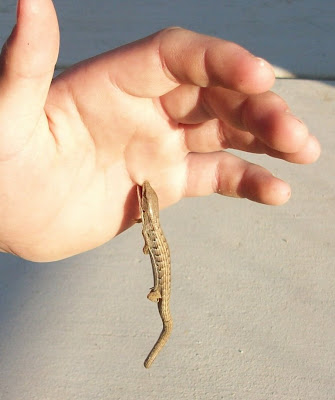Despite the name it's not a toad, it's a lizard.
It has a distinctive flat-body with a row of fringed scales down the sides and horns on the head. It's shape reminded me of a turtle because of the round body and head. This one, from head to tail, was less than two inches long. Tiny and adorable! He made a tiny little squeak noise when I got too close. Their favorite food is ants but they will also eat slow moving beetles, spiders, and some plant material. These lizards mate in the spring and lay 2-16 eggs in June or July, which hatch in August.
They are generally a gentle species, but have been known to try to push their cranial spines into the hand while held. If provoked, they hiss and threaten to bite. When excited, they puff themselves up with air, making themselves look bigger.
The giant "bolders" next to this lizard are bunny poop.
That should give you an idea of his size.






